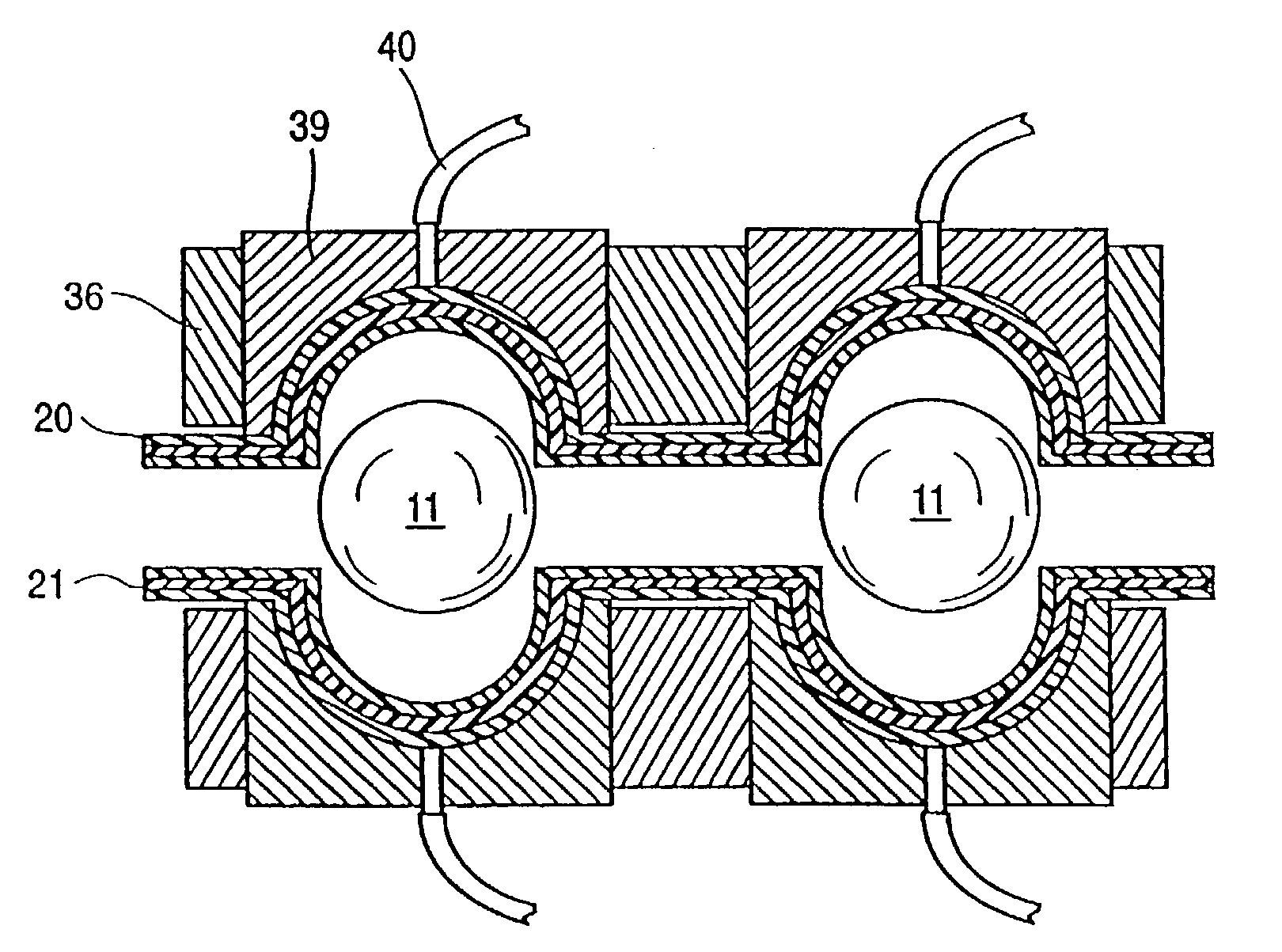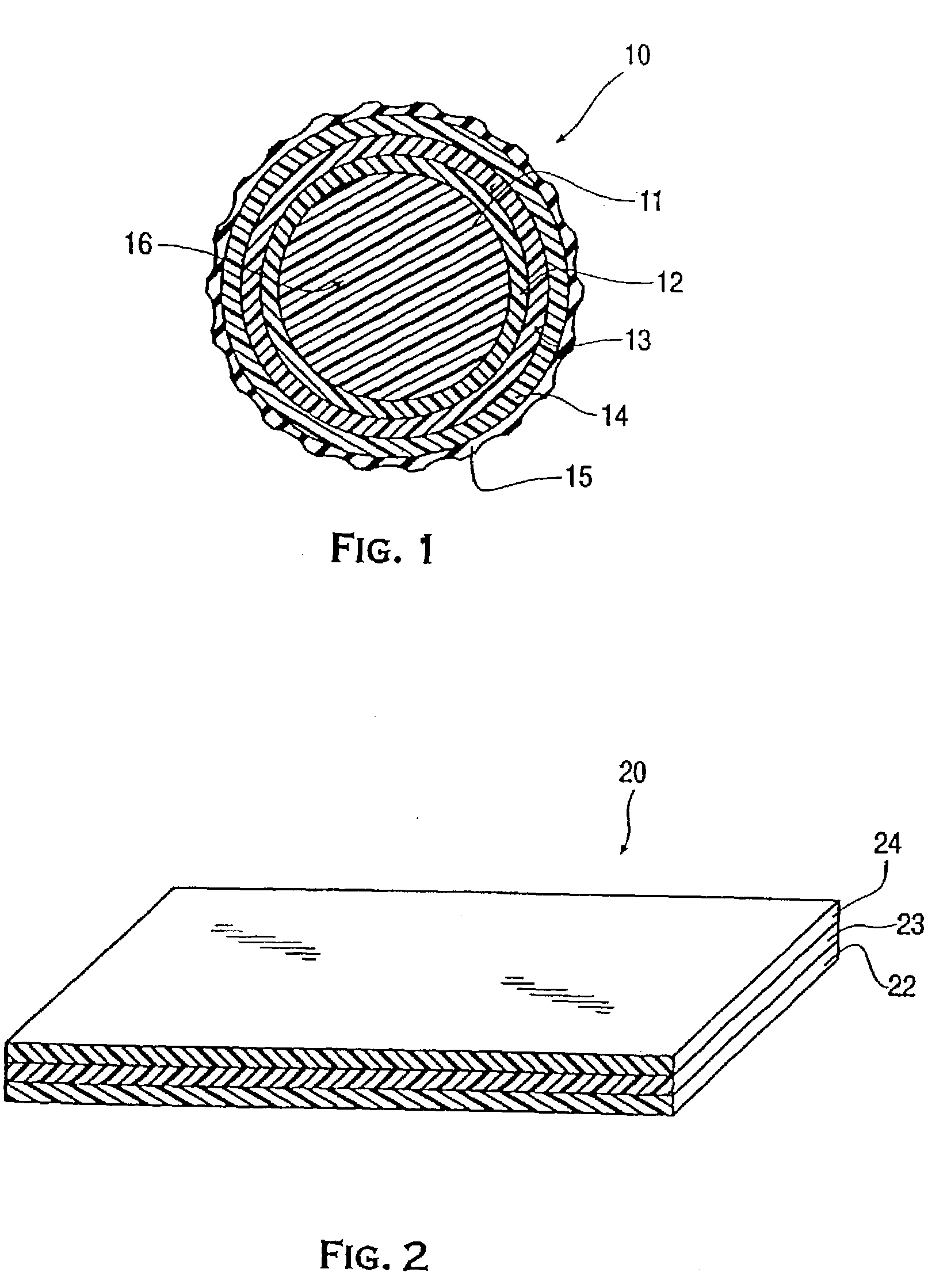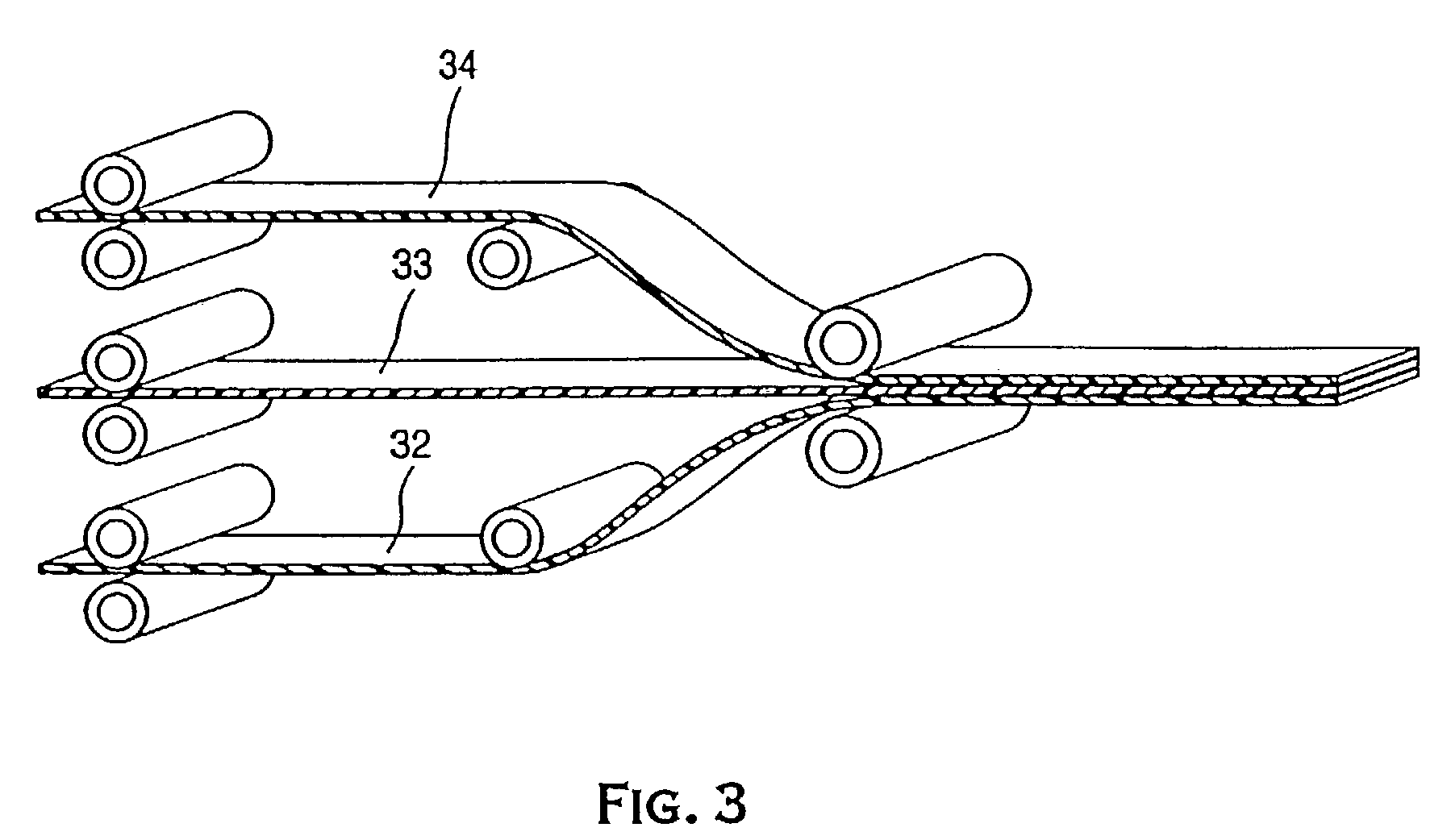Method of making a golf ball with a multi-layer core
a golf ball and multi-layer technology, applied in the field of multi-layer golf balls, can solve the problems of difficult control around the green, difficult manufacturing of golf balls, and difficulty in feeling
- Summary
- Abstract
- Description
- Claims
- Application Information
AI Technical Summary
Benefits of technology
Problems solved by technology
Method used
Image
Examples
example 1
[0200]Table 1 sets forth an example of the core contents, i.e., center and inner layers, according to one embodiment of the invention. The fillers used in the compositions of these examples are regrind and barium sulfate (BaSO4). Vulcup 40KE® and Varox 231XL® are free radical initiators, and are a-a bis (t-butylperoxy) diisopropylbenzene and 1,1-di (t-butylperoxy) 3,3,5-trimethyl cyclohexane, respectively.
[0201]
TABLE 1Core Compositions (pph, based on 100 parts of polybutadiene)Layer No.Center123Polybutadiene100100100100Polywate 32526231813Vulcup 40KE ®0.30.30.30.3Varox 231XL ®0.60.50.50.5BaSO431262525Zinc Diacrylate30323547SR-3502226Calcium Oxide3000Zinc Oxide0366
[0202]The center 11 set forth in Table 1, has a Shore C hardness of about 65 at the center point thereof and a Shore C hardness of about 68 at the midpoint between the center and the outer edge. The first layer 12 is harder than the center 11 and has a Shore C hardness of about 71. The second layer 13 is harder than the fir...
example 2
[0208]The center of the second embodiment, as set forth in Table 3, has a Shore C hardness of about 77. The first layer is softer than the center and has a Shore C hardness of about 73. The second layer is softer than the first layer and has a Shore C hardness of about 71. The third layer is softer than the second layer and has a Shore C hardness of about 68. The cover of the second embodiment golf ball is a harder cover than that used with the first embodiment and includes a blend of about 50 / 50 by weight of a standard sodium ionomer and a standard lithium ionomer. The cover, as described in Table 4, has a Shore D hardness of about 65 to 70.
[0209]Table 3 sets forth the contents of the golf ball core in the second embodiment. The compositions used to prepare the golf ball core of this embodiment are all in parts per hundred (pph), based on 100 parts of polybutadiene.
[0210]In the second embodiment, the center 11 of the core 16 was compression molded to a diameter of about 1.39 inches...
example 3
[0213]Table 4 below provides batch compositions for intermediate layer blends for forming the novel multilayer golf balls of the present invention. However, it is to be understood that the examples are only for illustrative purposes and in no manner is the present invention limited to the specific disclosures therein.
[0214]In particular, batch numbers 2-4 provide intermediate layer blends including NUCREL® 960, HYTREL® 3078, and ZnO used to form the intermediate layers of the golf balls of the present invention. Batch number 1 provides a control intermediate layer blend.
[0215]
TABLE 4Intermediate Layer FormulationsFlexuralBatch% NUCREL ®% HYTREL ®%ModulusSpecific#9603078ZnO(psi)Gravity1—802042101.27210751555601.21320701077101.1743065 572501.14
PUM
| Property | Measurement | Unit |
|---|---|---|
| Length | aaaaa | aaaaa |
| Length | aaaaa | aaaaa |
| Thickness | aaaaa | aaaaa |
Abstract
Description
Claims
Application Information
 Login to View More
Login to View More - R&D
- Intellectual Property
- Life Sciences
- Materials
- Tech Scout
- Unparalleled Data Quality
- Higher Quality Content
- 60% Fewer Hallucinations
Browse by: Latest US Patents, China's latest patents, Technical Efficacy Thesaurus, Application Domain, Technology Topic, Popular Technical Reports.
© 2025 PatSnap. All rights reserved.Legal|Privacy policy|Modern Slavery Act Transparency Statement|Sitemap|About US| Contact US: help@patsnap.com



